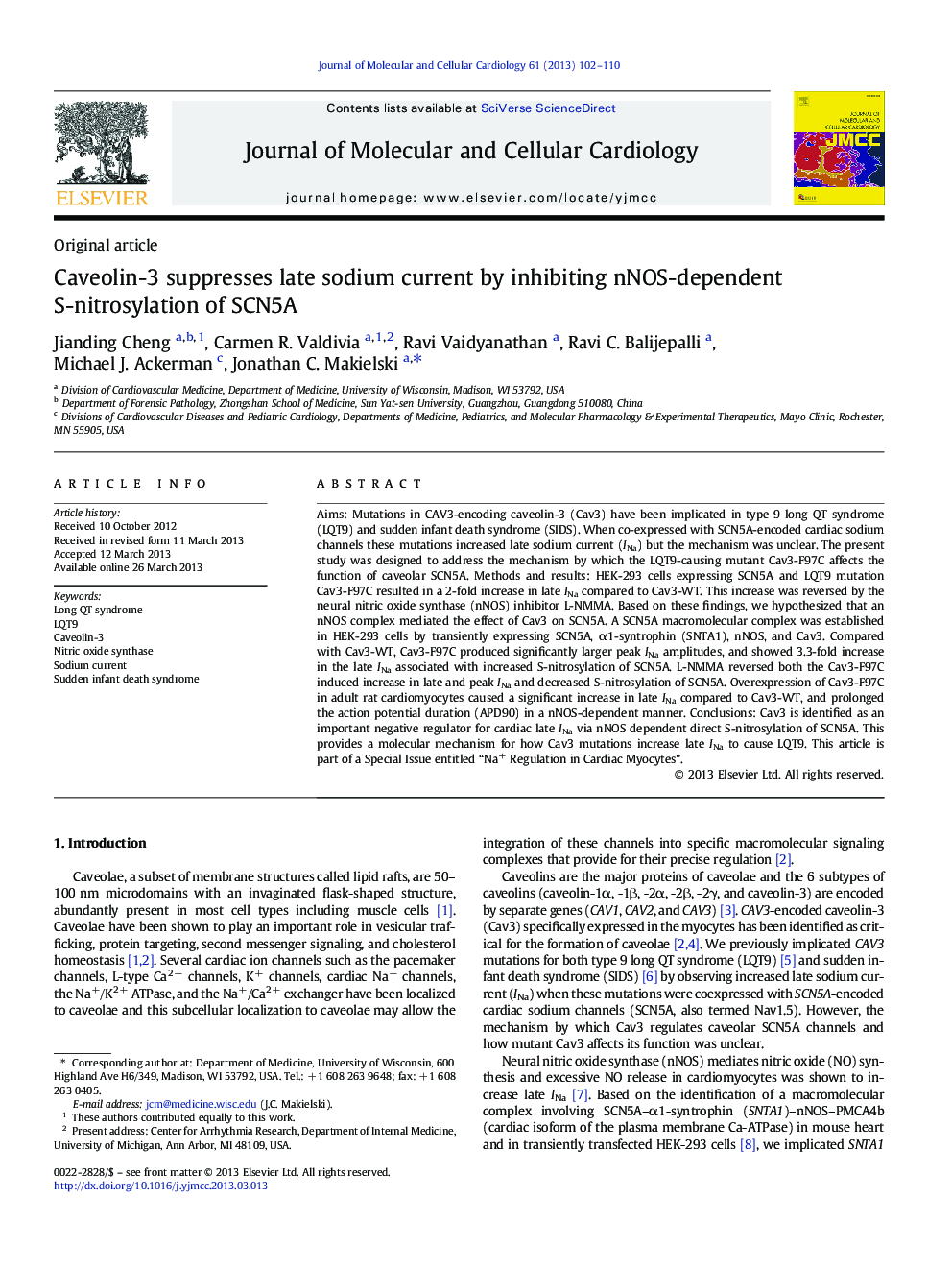| کد مقاله | کد نشریه | سال انتشار | مقاله انگلیسی | نسخه تمام متن |
|---|---|---|---|---|
| 8475156 | 1550444 | 2013 | 9 صفحه PDF | دانلود رایگان |
عنوان انگلیسی مقاله ISI
Caveolin-3 suppresses late sodium current by inhibiting nNOS-dependent S-nitrosylation of SCN5A
دانلود مقاله + سفارش ترجمه
دانلود مقاله ISI انگلیسی
رایگان برای ایرانیان
کلمات کلیدی
موضوعات مرتبط
علوم زیستی و بیوفناوری
بیوشیمی، ژنتیک و زیست شناسی مولکولی
بیولوژی سلول
پیش نمایش صفحه اول مقاله

چکیده انگلیسی
Aims: Mutations in CAV3-encoding caveolin-3 (Cav3) have been implicated in type 9 long QT syndrome (LQT9) and sudden infant death syndrome (SIDS). When co-expressed with SCN5A-encoded cardiac sodium channels these mutations increased late sodium current (INa) but the mechanism was unclear. The present study was designed to address the mechanism by which the LQT9-causing mutant Cav3-F97C affects the function of caveolar SCN5A. Methods and results: HEK-293 cells expressing SCN5A and LQT9 mutation Cav3-F97C resulted in a 2-fold increase in late INa compared to Cav3-WT. This increase was reversed by the neural nitric oxide synthase (nNOS) inhibitor L-NMMA. Based on these findings, we hypothesized that an nNOS complex mediated the effect of Cav3 on SCN5A. A SCN5A macromolecular complex was established in HEK-293 cells by transiently expressing SCN5A, α1-syntrophin (SNTA1), nNOS, and Cav3. Compared with Cav3-WT, Cav3-F97C produced significantly larger peak INa amplitudes, and showed 3.3-fold increase in the late INa associated with increased S-nitrosylation of SCN5A. L-NMMA reversed both the Cav3-F97C induced increase in late and peak INa and decreased S-nitrosylation of SCN5A. Overexpression of Cav3-F97C in adult rat cardiomyocytes caused a significant increase in late INa compared to Cav3-WT, and prolonged the action potential duration (APD90) in a nNOS-dependent manner. Conclusions: Cav3 is identified as an important negative regulator for cardiac late INa via nNOS dependent direct S-nitrosylation of SCN5A. This provides a molecular mechanism for how Cav3 mutations increase late INa to cause LQT9. This article is part of a Special Issue entitled “Na+ Regulation in Cardiac Myocytes”.
ناشر
Database: Elsevier - ScienceDirect (ساینس دایرکت)
Journal: Journal of Molecular and Cellular Cardiology - Volume 61, August 2013, Pages 102-110
Journal: Journal of Molecular and Cellular Cardiology - Volume 61, August 2013, Pages 102-110
نویسندگان
Jianding Cheng, Carmen R. Valdivia, Ravi Vaidyanathan, Ravi C. Balijepalli, Michael J. Ackerman, Jonathan C. Makielski,